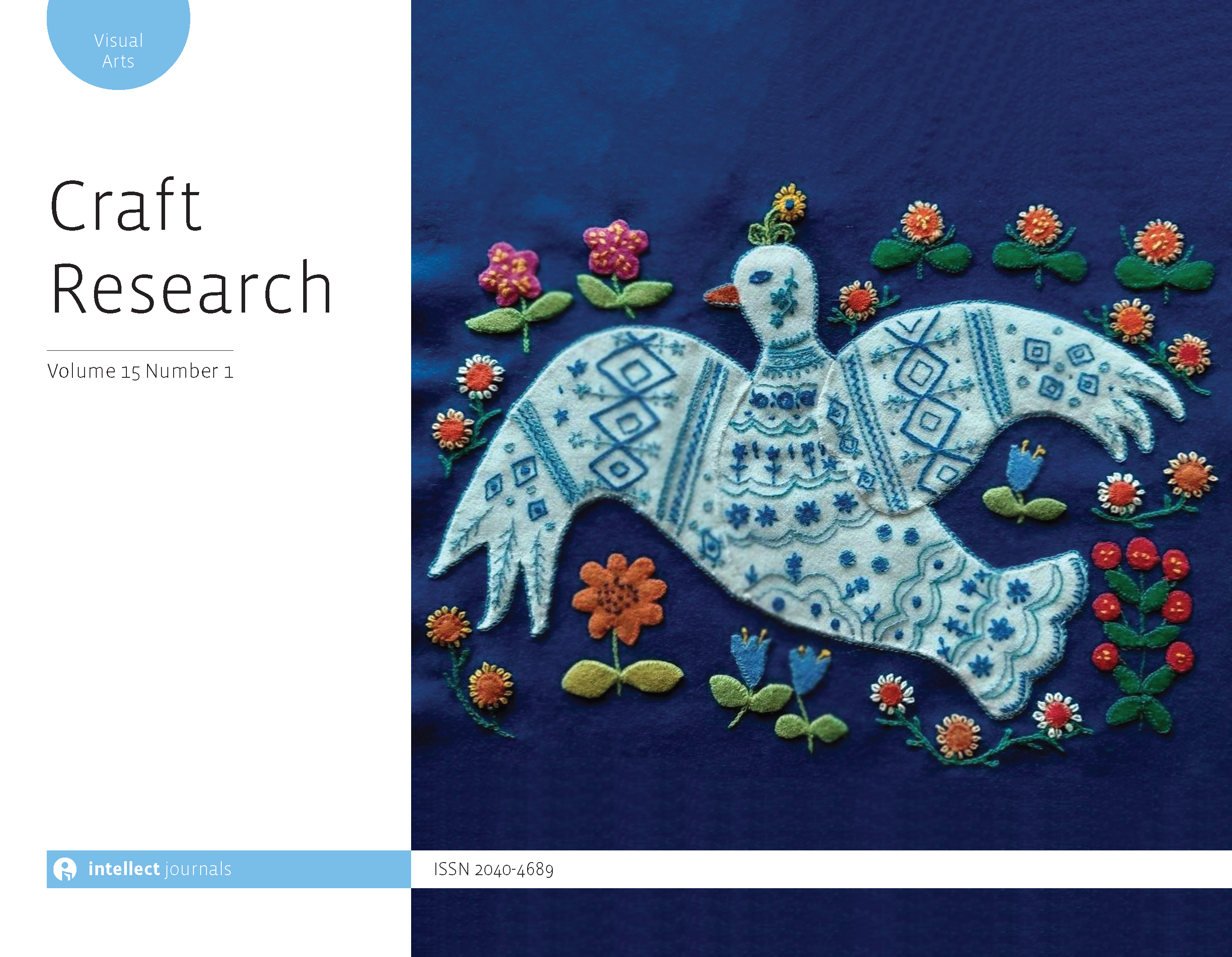-
oa There and back again: A carver’s tale of losing and regaining sense of space due to a brain tumour
- Source: Craft Research, Volume 12, Issue 1, Mar 2021, p. 127 - 152
-
- 02 Oct 2020
- 04 Dec 2020
- 01 Mar 2021
Abstract
Sense of space is a core cognitive ability necessary for imagining future three-dimensional forms, rotating them mentally, as well as for abstract thinking. It is a core ability in craft activities, enabling the maker to ideate and envision their ideas. This autoethnographic narrative inquiry presents my experience of woodworking whilst a brain tumour impeded my sense of space. The narrative describes my experience of losing and regaining this ability and the actions I took to continue carving anyway. The article’s evocative narrative exemplifies how the core identity of being a carver and the carving process itself function as coping mechanisms in the face of terminal cancer. The article’s main purpose is to generate knowledge on the role of spatial skills in carving and their elusive nature. Theoretically positioned in the field of embodied cognition, the article explains how our sense of space develops in interaction with materials and our surroundings. It also suggests how future education can be changed by purposefully incorporating targeted craft practices to better support the development of a sense of space.



